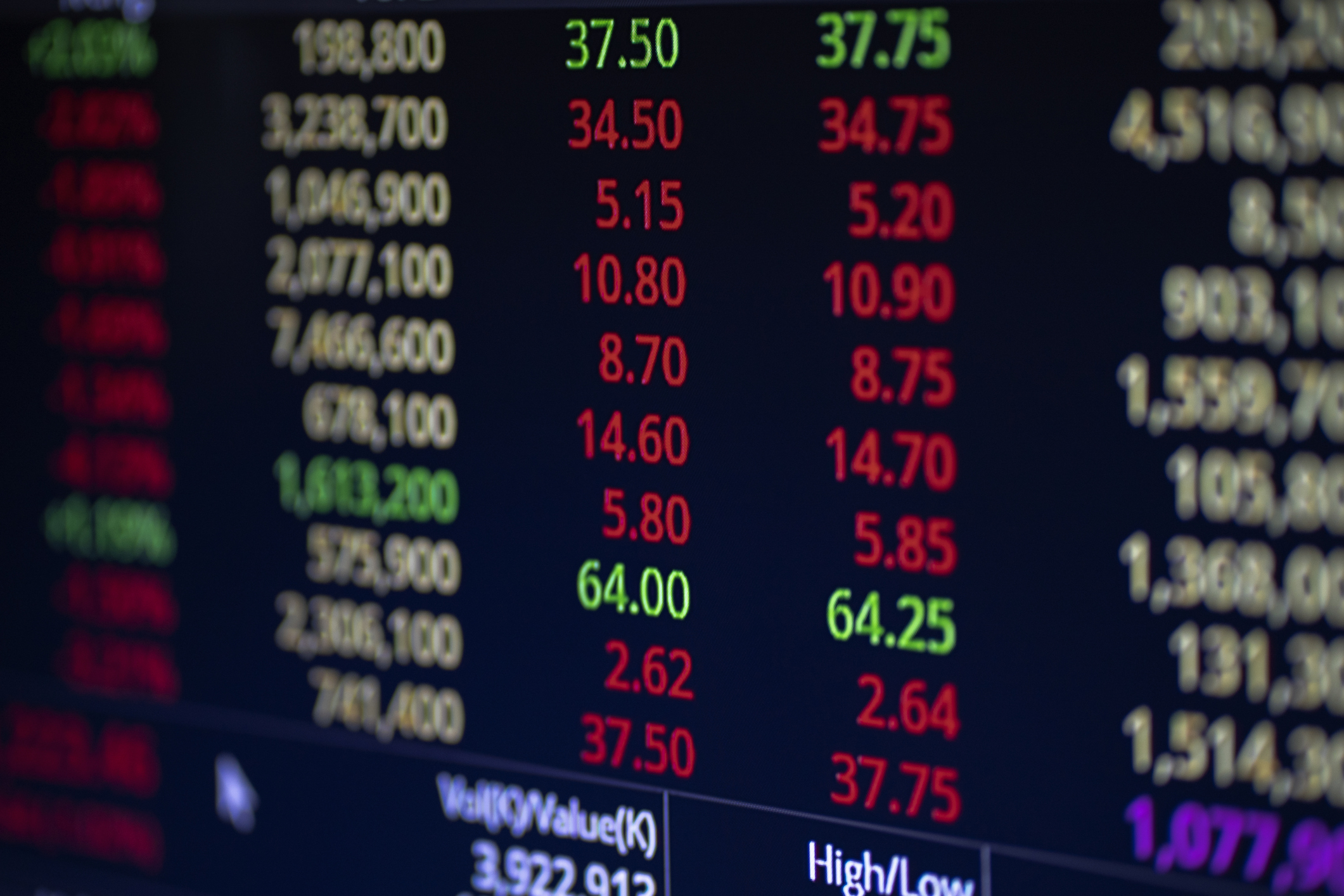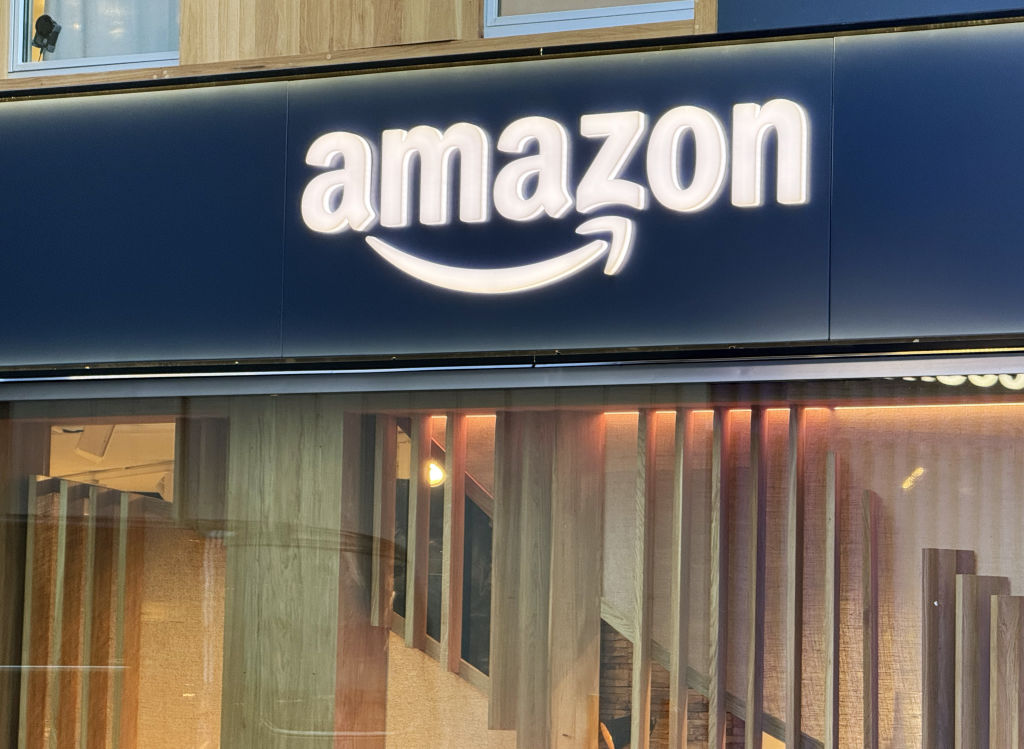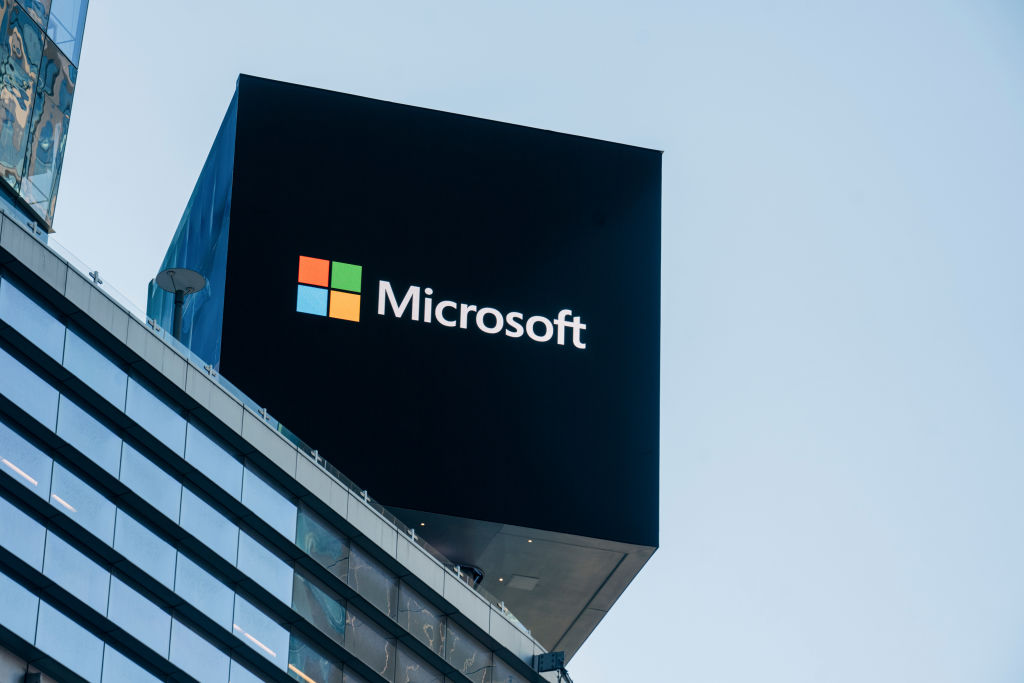If you ever come across a discussion about portfolio construction, you’ll inevitably (and probably quickly) come across the term “core.”
The exact definition will differ from one person to the next, but the general idea is that a portfolio’s core is made up of long-term investments that are expected to generate reliable returns. Anything you hold to accomplish goals outside of that core – dip into growth stocks for outperformance, try to generate above-average yield, for instance – are considered noncore or satellite holdings.
You’ll typically build your core with mutual funds and/or exchange-traded funds (ETFs) because they provide exposure to basic strategies while also delivering built-in diversification. Satellite holdings are often made up of more specialized funds and individual stocks.
Sign up for Kiplinger’s Free Newsletters
Profit and prosper with the best of expert advice on investing, taxes, retirement, personal finance and more – straight to your e-mail.
Profit and prosper with the best of expert advice – straight to your e-mail.
But there’s no rule that says you can’t try to use stocks to build part of your portfolio foundation. So if you have more of an interest in individual companies, read on as I discuss a few “core stocks” every investor should own.
Data is as of November 11, 2025.
Core Investments Aren’t Just About “What,” But “How Much”
The core of my portfolio is going to differ from your core, which is going to differ from your neighbor’s core … you get the point. Risk tolerance, investment horizon, our financial goals and other factors will all determine what we broadly want to invest in.
But regardless of our goals, we can use some of the same instruments to accomplish them – it’s just a matter of how much we invest in those instruments.
Consider a pair of Vanguard target-date funds (TDFs):
- Vanguard Target Retirement 2070 Fund (VSVNX), which is designed to build wealth for people who plan to retire in roughly 40 years, allocates more than 90% of its assets to stocks, with the rest in bonds.
- Vanguard Target Retirement Income Fund (VTINX), appropriate for people who are already in retirement and want to protect their wealth, has just 30% of assets invested in equities, with the remaining majority invested in bonds.
Two products, two completely disparate goals. And yet … the vast majority of both TDFs’ assets are concentrated in the same four funds. Just in different amounts.
For instance, the 2070 fund allocates 54% of assets to the Vanguard Total Stock Market Index Fund Institutional Plus Shares (VSMPX), but the retirement income fund has just 18% of assets in VSMPX. However, Vanguard Total Bond Market II Index Fund Investor Shares (VTBIX) makes up just 5% of the 2070 fund’s assets, but at 35%, it’s Target Retirement Income’s largest holding.
I say all that to say this: The following stocks can reasonably be called “core” positions. However, the percentage of capital you should dedicate to any single stock will vary widely based on your circumstances.
How I picked the best core stocks to own
I think the most common reader assumption going into this is that “core stocks” are going to be giant, durable blue chips with substantial dividend yields. You know: the Coca-Colas and Procter & Gambles of the world.
But I went in a different direction.
The über core holding – an S&P 500 index fund – is considered a “large blend” fund, meaning it holds a blend of growth and value stocks. In other words, what you get on the whole is somewhere down the middle.
I’m taking the same approach with this list of equities, requiring them to be “large core” stocks as defined by Morningstar:
“Large core stocks are in the top 70% of the capitalization of the U.S. equity market and typically do not have pronounced tilts towards growth or value characteristics with respect to valuation ratios, dividend yields, and growth rates on earnings and sales, among other metrics.”
In short, if you want stocks that tilt far in either direction, you’ll have to look elsewhere.
As far as the full screening criteria go, we’re looking for core stocks …
- That are categorized as “large core” by Morningstar.
- That are members of the S&P 500. There’s nothing wrong with international stocks, but I’m sticking to U.S. stocks for the purposes of building this list.
- With a market value of at least $50 billion. I’m going a little beyond “large core” with this requirement. Companies of this size tend to be among the best-resourced companies on the planet and often have significant cash holdings, which may help with long-term durability.
- With a total debt-to-equity ratio of 2 or less. A little debt leverage is healthy enough, but we want to avoid companies that are too reliant on IOUs to finance their operations. High debt service is a drag on resources, and high debt-to-equity ratios imply greater risk. Generally speaking, a debt-to-equity ratio of 2 or less is considered healthy.
- With estimated two-year average annual revenue and earnings growth of at least 5%: Analyst estimates are merely educated guesses, and even those guesses are limited to the relative short-term. Still, estimates for at least modest top- and bottom-line growth provide us with a baseline of operational quality.
- With a consensus Buy rating: All of the stocks must have an average broker recommendation of 2.5 or less within S&P Global Market Intelligence’s ratings scale. S&P Global Market Intelligence converts analysts ratings into a numerical scale. Anything with a score of 2.5 or less is considered a Buy. Again, while analysts’ calls are typically more short-term in nature, only really applying to the next year or two, they can help us identify quality and reasonable valuations.
Visa

(Image credit: Jakub Porzycki/NurPhoto via Getty Images)
- Sector: Financial services
- Market value: $654.1 billion
- Dividend yield: 0.8%
- Consensus rating: 1.63 (Buy)
Visa (V) is the king of plastic, boasting nearly 5 billion Visa credit cards and debit cards across the globe that are responsible for nearly $16 trillion worth of transactions annually. It’s also something of a hybrid – while it’s categorized as a financial firm, it’s technically not a bank. Instead, it’s a payments processor that empowers banks’ clients to spend.
Visa’s market-leading position speaks to its reliability, but what about growth? Believe it or not, nearly two-thirds of the world’s retail transactions are still performed via cash or check – providing Visa with plenty more market to gobble up over time. Over the next two years, the pros expect Visa to improve its sales and profits by a respective 11% and 13% annually on average.
“Visa remains well-positioned to gain global market share from the multi-year runway to convert paper-based payments to card, enabling high-single payment volume growth over the next three years, at least,” say Oppenheimer analysts, who rate the Dow Jones stock at Outperform.
The underlying financials provide plenty to like. Debt-to-equity of 0.68 indicates that Visa isn’t remotely overleveraged but isn’t afraid to use at least a little debt to grow the business. And despite making plenty of acquisitions – over the past few years, it has bought companies including Mexican payments processor Prosa, open banking platform Tink, and AI payments protection tech firm Featurespace – it has $19 billion in cash and short-term investments set aside for a rainy day.
But Visa does share some of its profits: While the sub-1% yield isn’t much to marvel at, it’s a reliable dividend growth stock, currently boasting a 16-year streak of consecutive payout hikes.
S&P Global

(Image credit: Getty Images)
- Sector: Financial services
- Market value: $148 billion
- Dividend yield: 0.8%
- Consensus rating: 1.33 (Strong Buy)
I’ve already mentioned S&P Global’s (SPGI) arguably most famous product, the S&P 500. That’s just one of the literal millions of indexes produced by its S&P Dow Jones Indices arm. But S&P Global is a diversified financial company responsible for so much more, including financial markets and asset data, commodity and energy information and credit ratings, to name a few.
In other words: You’re investing in the financial sector, yes, but you’re not investing in a one-dimensional bank – instead, you’re getting exposure to capital markets, business solutions, even AI. That breadth somewhat blunts the cyclical nature of many of its businesses while also positioning the company for growth. Wall Street expects average annual improvements of 7% and 11%, respectively, on the top and bottom lines. Not a breakneck pace, but respectable.
“Bigger picture, we continue to view S&P Global as unparalleled in the breadth and depth of its data assets, aided by the secular tailwinds supporting data consumption and enhanced by the company’s AI capabilities,” says William Blair analyst Andrew Nicholas, who rates the financial stock at Outperform.
Debt-to-equity is a very low 0.36 at the moment, and it has nearly $2 billion in cash and short-term investments. SPGI is a dividend grower, too – in fact, its 52-year streak of distribution improvements puts it among the ranks of the Dividend Kings.
Boston Scientific

(Image credit: Photo by Lane Turner/The Boston Globe via Getty Images)
- Sector: Health care
- Market value: $152.0 billion
- Dividend yield: N/A
- Consensus rating: 1.32 (Strong Buy)
Health care has been among the market’s most versatile sectors over the decades, simultaneously providing both defensive and growth characteristics while occasionally offering decent income, too.
Of course, in the case of Boston Scientific (BSX), two out of three ain’t bad.
Boston Scientific is a medical device maker with a wide range of products under a pair of segments: MedSurg and Cardiovascular. The former includes products such as biliary stent systems, digital catheters, sheaths, balloons, laser systems, and more, while the latter includes implantable cardiac devices, pacemakers, ICD leads, even patient management systems. In short: These are products that people will continue to need to enjoy a high quality of life (and in some cases, to simply live), but many of these products are new technologies and treatments driving continued growth.
“Boston Scientific continues to ride the momentum of several key product and portfolio launches, most notably its pulsed-field ablation (PFA) solutions including Farapulse and Farawave,” says Citi analyst Joanne Wuensch (Buy). “With a steady cadence of new technology and associated mix benefit on margin, we believe that BSX is positioned to deliver double-digit revenue growth leveraged to double-digit EPS growth faster than sales.”
Not that sales are anything to sneeze at. Two-year average annual growth estimates for revenues and earnings are 15% and 17%, respectively. In fact, that top-line estimate is the best among these five core stocks. Meanwhile, debt-to-equity is a perfectly fine 0.51, and cash and short-term investments sit at $500 million right now.
But you won’t get income out of BSX, which currently doesn’t pay a dividend.
Amazon

(Image credit: Ömer Sercan Karku/Anadolu via Getty Images)
- Sector: Consumer discretionary
- Market value: $2.66 trillion
- Dividend yield: N/A
- Consensus rating: 1.30 (Strong Buy)
Amazon (AMZN) is another hybrid – it’s considered a consumer discretionary stock for its legacy e-commerce business, but it’s undoubtedly a technology play given its market-leading Amazon Web Services (AWS) cloud provider arm. While we’re at it, let’s throw in communication services because of its Amazon Prime TV and Amazon Music offerings.
And while it has had some struggles on this front, Amazon continues to ply its trade as a consumer staples provider. In August, the company announced that it had launched same-day perishable grocery delivery in more than a thousand cities (expecting to hit 2,300 cities by the end of 2025).
Then in October, it rolled out its private-label food brand, Amazon Grocery, offering more than 1,000 food items spanning pantry staples, baking essentials, produce, dairy, even meat and seafood, with “most products priced under $5.”
But AWS is still the straw that stirs the drink.
“AWS remains the current market leader, which we expect to remain the case for the foreseeable future, even if the gap between peers is expected to narrow,” says HSBC analyst Paul Rossington, who rates the stock at Buy. “This is underpinned by continued investment in the AWS offering and new contract wins across a broad range of existing and new clients. This makes for a lower risk growth profile vs peers who are more heavily reliant on a smaller number of key contracts.”
Amazon leans “growthy”; two-year average annual estimates for revenue and earnings are a high 10.6% and 17.3%, respectively.
AMZN continues to throw money back into the business, so there’s currently no dividend of which to speak, but the company is clearly prepared for a rainy day, with $93 billion sitting around in cash and short-term investments. Leverage is no issue, either, with debt-to-equity sitting around 0.41.
Microsoft

(Image credit: Jeenah Moon/Bloomberg via Getty Images)
- Sector: Technology
- Market value: $3.78 trillion
- Dividend yield: 0.7%
- Consensus rating: 1.21 (Strong Buy)
Microsoft (MSFT) is one of the largest companies on Earth and a pillar of the technology sector. Its legacy productivity business includes Microsoft 365 – the famous suite of tools including Word, Excel and PowerPoint – but also Power BI, Microsoft Teams, Security and Compliance, and the AI assistant Copilot. But like Amazon, it too boasts a powerful cloud product (Azure), as well as server products, enterprise and partner services, personal computing (including Surface laptops) and the Xbox gaming division.
The company’s growth at the moment is in part tied to generative AI. Says Morgan Stanley analyst Keith Weiss (Overweight):
“Microsoft, in particular, remains in the leadership position, driven in part by: 1) strong alignment to key secular themes and CIO priorities, 2) deep integrations across the software ecosystem, 3) vast scope of products to monetize Generative AI across its broad portfolio and installed base, and 4) significant and increasing AI infrastructure investments. All of this translates to Microsoft expanding its leadership position as the #1 share gainer of IT wallets on a 1-year and 3-year view as workloads shift to the cloud and its leadership position allows it to capture the largest incremental share of GenAI spend by a wide margin.”
The bottom line on Microsoft, according to Weiss, is that it “remains the clearest beneficiary of GenAI spend.”
That AI fervor is fueling average annual revenue and earnings growth estimates of 16% and 15%, respectively, over the next two years. But Microsoft’s breadth of business provides some cushion and peace of mind should fears that we’re in an AI bubble come to pass (and should that bubble pop). Also acting as a sizable backstop is a $95 billion war chest.
In the meantime, debt isn’t anything to worry about, with MSFT sporting a low debt-to-equity of 0.33. And while Microsoft doesn’t provide much in the way of headline yield, it has built itself an admirable streak of dividend growth, currently sitting at 20 years.





